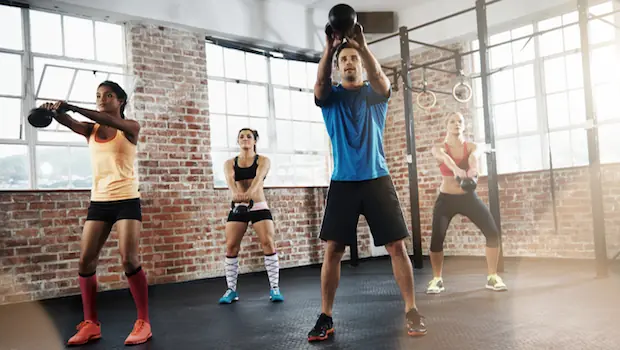
Just when you think you've nailed down the names of all the different exercises in your new workout program (and are ready to give it a whirl), it calls for a circuit here, throws in a bit of interval training there, and wait, a super... huh? What dimension did you just step into, you wonder.
We've all been there. Understanding fitness lingo basically feels like hearing French or Klingon for the first time. Still, there are certain terms within the fitness lexicon that can be hard for even gym veterans to differentiate, such as circuits, intervals, and supersets.
Fitness Events Near You
When you see them in action, they don't seem that different. Each describes an intense way to work out, and all can help you get fitter. But there are ways to bring out the best of their hidden powers under particular circumstances.
Let's go over the basics of each.
1. Circuits
If you've ever done a group strength-training or boot camp-style class, you've done some circuit-style training. A circuit is composed of as little as four to as many as 10 different movements. Because these often involve dumbbells or a barbell, they tend to be considered strength movements, says fitness coach JC Deen of JCD Fitness. Cardio machines are rarely involved.
The overarching goal is to complete every exercise in quick succession with the best form possible. You can determine how you want to do that: Either do the entire circuit a set number of times (or rounds), or complete as many rounds as you can in, say, 20 minutes. It doesn't sound very long, but just imagine fluidly moving between full-body exercises, such as push-ups, mountain climbers, planks, lunges, and more, without pause. We're sweating just thinking about it.
The individual exercises themselves can also be based on a set amount of work (number of reps) or performed for a particular time. If done for time, you decide on the work and rest periods. For example, you might perform an exercise for 30 seconds nonstop before catching your breath for a glorious 10 to 30 seconds. Then you move onto the next exercise in the circuit for another 30 seconds of work, and repeat.
2. Intervals
Intervals describe the general type of training that involves repeated bouts of moderate-to-high effort intermixed with rest periods. With intervals, it's really all about the work-to-rest ratio. We say "ratio" because your work duration can vary.
For example, in one style of interval training, Tabata, you'll perform 20 seconds of all-out effort, followed by 10 seconds of rest (that's a 2:1 work-to-rest ratio). But you could also sprint for 60 seconds, rest for two minutes, and repeat (a 1:2 work-to-rest ratio). And if you're new to intervals, you may want to start with a less-structured style, like fartlek training (try saying that without giggling). In this style, you'll run quickly until you're tired, slow to a jog to recover, then pick up the pace again.
But perhaps the most well-known style is high-intensity interval training. HIIT is the in vogue thing to do if you want to supersize your workout efforts.Studies suggest that sprint-based workouts with intermittent rest periods are highly effective for improving fitness and eliciting cardiovascular benefits similar to a longer slog. Sounds sweet, right? The kicker is that the "high-intensity" in its name isn't just there for dramatic flair.
"In this instance, intensity is referring to effort of force production, not effort of sustained endurance," says Will Levy, head trainer at Melbourne Strength & Conditioning.
In other words, to really cash in on HIIT, you need to be ready to feel downright uncomfortable when you crank out near 100 percent effort for a length of time. "There may be times when as little as 3 or 4 seconds is called for, and 20 seconds would probably be the upper limit, as it is virtually impossible to sustain true 100 percent intensity for any longer than that for even high-level athletes," Levy says.
And that's where HIIT-ers can go wrong. It's not about the duration of your high, but the high in your intensity. If you're not completely breathless by the end of your interval, you could have done more. The work-to-rest ratio varies depending on your goal, but the important thing, as Levy says, is that you actually rest during the rest periods—not jog, pedal, or move slower. Actually stop and rest.
3. Supersets
Supersets are included in many strength training programs to add more total work (also known as volume). In a superset, you complete all the prescribed reps of two exercises back-to-back before a period of rest. Ideally, you would choose an appropriate weight that you can sustain throughout every superset—not so heavy that your muscles are immediately fatigued, but not so light that you can sneak a look at your Instagram feed.
When picking the exercises to superset, the common practice is to combine movements that target opposing muscle groups (e.g., a chest exercise followed by a back exercise).
If you're wondering, you can tack on one more exercise to turn it into a leveled-up superset called a tri-set, or giant set, which follows similar guidelines. In general, supersets are really helpful for moving through workouts with a greater number of exercises more quickly.
More From Greatist: Interval Training



